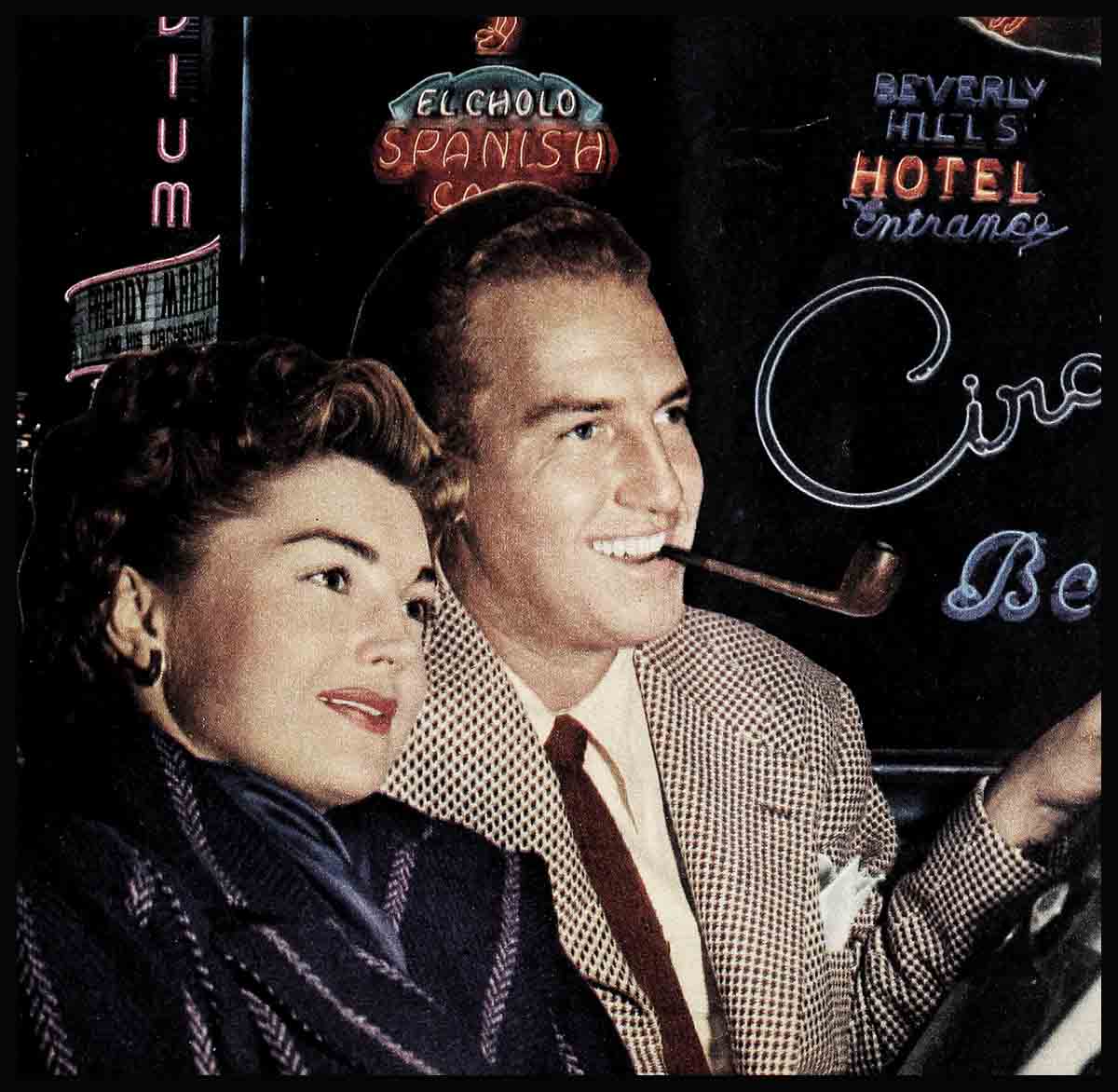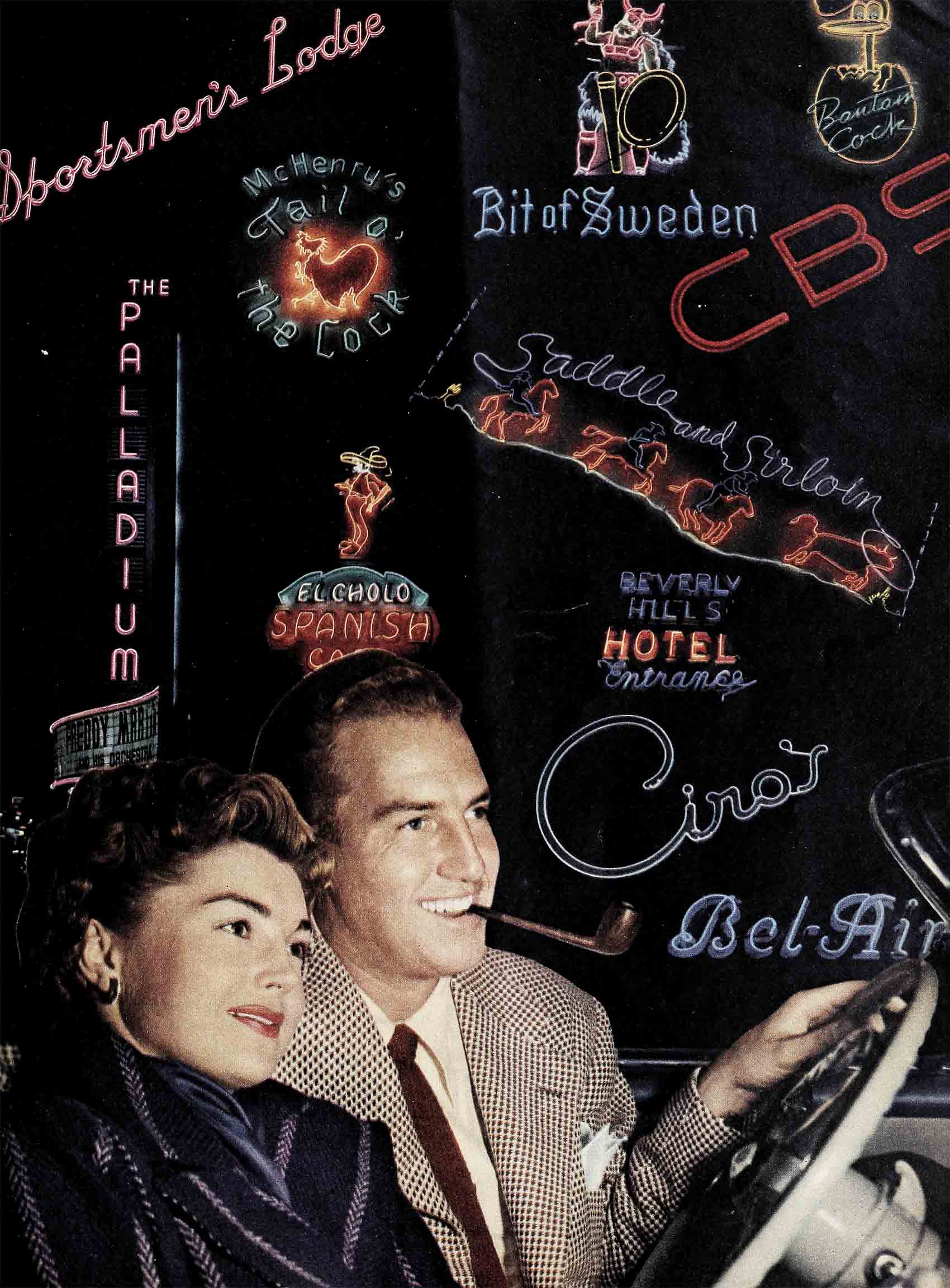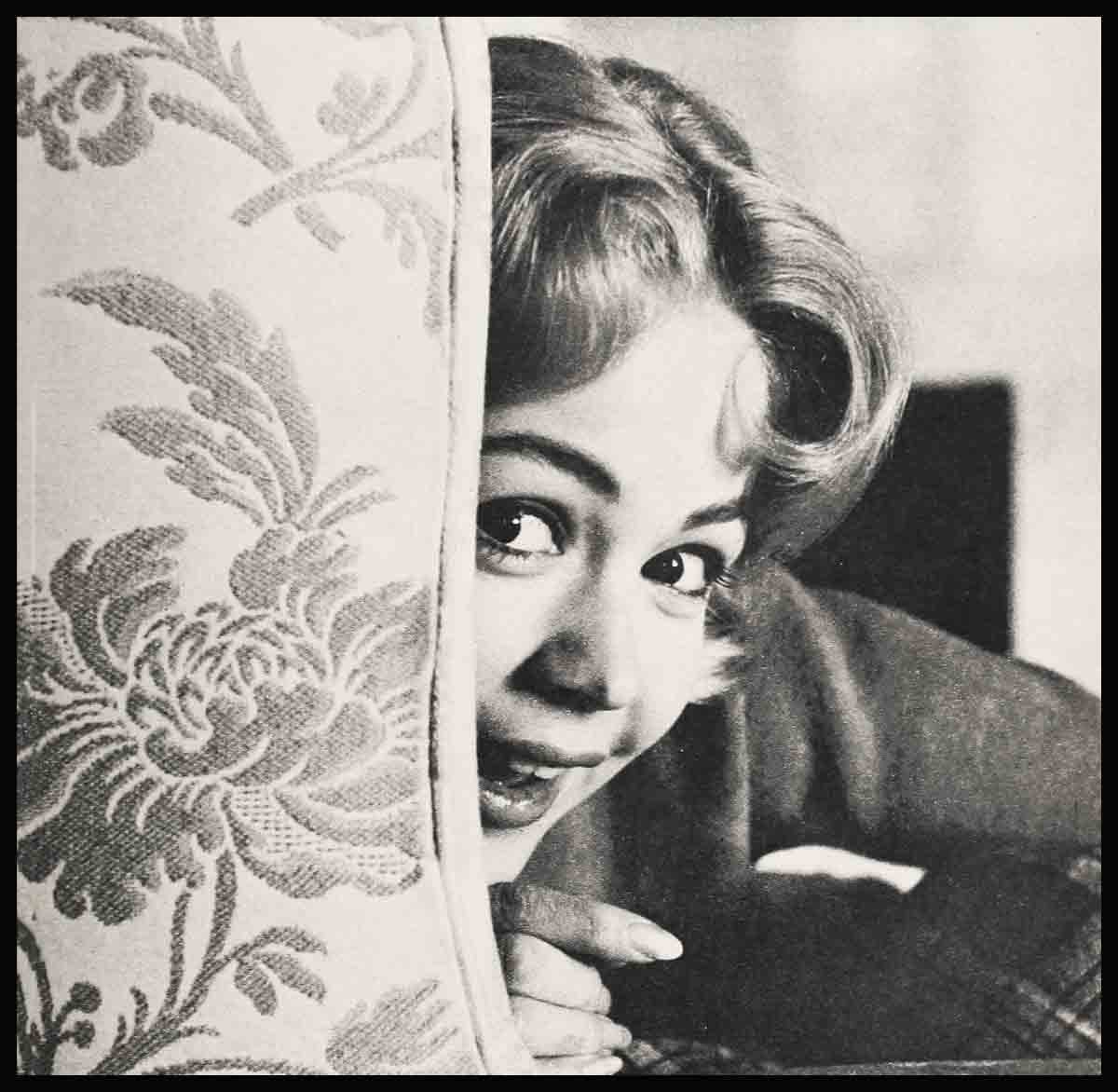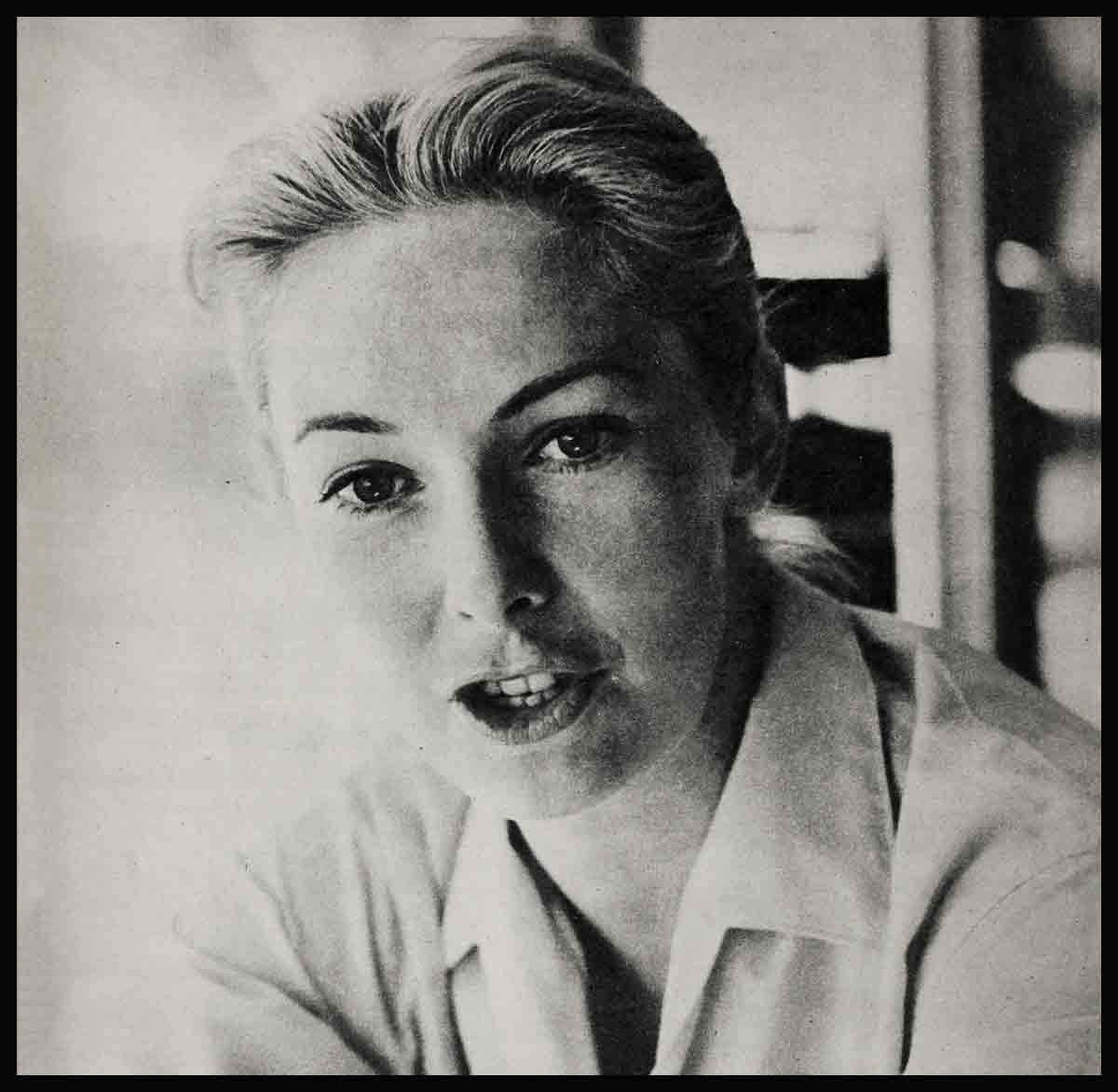
Sunshine Trails
Now, 1950, is the time to plan your vacation in Southern California. Now, for the first time since the war, accommodations are of the best. Most of the celebrated hotels have been redecorated and refurnished; new, sparkling, comfortable motels of contemporary design (and charging a reasonable tariff) are everywhere.
Shops are stocked with the best of domestic and imported wares; courtesy has returned to the manner of those who come in contact with tourists. The welcome mat is out and the fatted calf is roasting within. Come to California and find out about western hospitality!
Hollywood is on the itinerary of most tourists bound for California, with reason. The film capital, itself, is filled with exciting places to go and wonderful things to see.
But more than this, Hollywood is a perfect base for expeditions in all directions—for a day’s drive through luxurious suburbs like Beverly and Holmby Hills, Bel-Air, Malibu, Santa Monica, San Fernando Valley. For a flight, train or motor trip to Las Vegas, for a day or two at magic Catalina, for a jaunt up the coast to Carmel, a tour of the romantic old missions or a weekend at the desert.
For those of you who want to cram the greatest amount of sight-seeing into the shortest length of time possible, we hereby supply a three-day itinerary which, though rigorous, should provide the average traveler with a bird’s-eye, jet-propelled survey of the Los Angeles area.
For convenience sake, we will start your tour on Tuesday morning, presuming that on Monday you have visited the All-Year Club Free Visitors’ Bureau, 517 West Sixth Street, Los Angeles, to secure a Los Angeles street map, a copy of “Here’s Glamourland” (a brochure essential to your fullest enjoyment of your Los Angeles stay), and whatever other literature appeals to your particular needs.
In addition to this visit on Monday, you should also make arrangements with Grey Line Motor Tours, 320 South Beaudry, Los Angeles 13, MUtual 3111, to be picked up at the Ambassador Hotel on Tuesday morning because you wish to take Tour No. 2, the Beverly Hills-Beach Tour. This tour starts at nine am., requires almost four hours, and costs $3.16 per person. (Seasoned travelers are agreed that the best way to get acquainted with a town fast, is to take sight-seeing tours.)
If at all convenient, you should select the Ambassador Hotel as a meeting place because there is plenty of space on the nearby side streets to park your car. Downtown Los Angeles, where the Grey Line picks up passengers from all hotels, is too congested for the newly-arrived motorist’s comfort. Naturally, if you do not have your own car, you will be called for at the large hotel where you are registered, or at a convenient location.
Tour No. 2 will take you through the Wilshire District, past several motion picture studios and radio stations, along Hollywood Boulevard and the Sunset Strip, through Beverly Hills and Brentwood where the driver will point out motion picture homes; along the Riviera with its country clubs and polo fields, past the Will Rogers estate, down to the sea.
On your return trip, ask the driver to drop you at the Beverly Hills Hotel in Beverly Hills. You can lunch there. You also might request the use of the pool. Or you can go further south in Beverly Hills and visit the Beverly Wilshire Hotel. At this point you will have your choice of several luncheon spots: The Beverly Wilshire dining room, Blum’s, a block west, the Beverly Hills Brown Derby across the street, or Romanoff’s one and a half blocks north on Camden Drive.
Walk the full length of Beverly Drive. Slip around the corner, east, to Canon Drive and Brighton Way, west side of the street, to the Actor’s Hobby Mart. Watch for celebrities everywhere in Beverly Hills.
The time should now be about 3 p.m.
Board an eastbound Wilshire Boulevard bus and ask for a transfer to Fairfax Avenue. Ask to be let off at Fairfax. Transfer to a northbound Fairfax bus and ask to be let off at Third Street, which is the site of the Farmer’s Market.
Browse through the Farmer’s which is at the extreme north end of the market, then work your way down to the food booths. Allow yourself a light repast to tide you over until your late dinner. A lobster salad will be around a dollar, a miniature banana cream-pie is thirty cents.
Leave the market at 6:30 p.m (the grocery stalls close at six, the hot food stalls at eight), and walk north to Beverly Boulevard, passing the colorful Singapore Spa on the left. (This is a restaurant-bar where the Chinese decor is breath-taking.)
On your right you will also pass Gilmore Stadium, home of midget-car racing and many other sports events.
Take an eastbound Beverly bus to Second and Hill Street. Walk east one short block to Broadway and take a northbound 5, 9, or W car. Get off at Sunset Boulevard and walk east two short blocks, past the Old Plaza Church, to Olvera Street. This was Los Angeles’ first street.
Stroll through the Mexican handicraft shops, have your caricature made by a strolling artist, visit The Old Adobe (admission 50c) which was General Fremont’s headquarters during the conquest of California. Note the thick walls, the ponderous furniture shipped around The Horn, and make a wish in the old well in the patio.
When you have inspected Olvera Street, walk back to Broadway & Sunset and take a northbound 5, 9, or W car, sit on the left hand side, and get off when you see the dragon lights marking New China Town. Have dinner in one of the delightful restaurants and browse through the shops.
By this time you should be a little weary, so take a taxi back to your car at the Ambassador. The fare will be around $2.00 plus 10% for each extra passenger.
(For further information about public transportation, call the Los Angeles Transit Lines, PRospect 7211, and ask for “Information.”)
Incidentally, don’t worry if your hands and feet swell and you feel sleepy. It’s the lowelitude (opposite of altitude), plus the fact that Los Angeles is semi-tropical.
Spend all day Wednesday in Catalina. The boat trip each way will be restful, and by this time you’ll need to relax.
If a South Sea Island is your idea of the perfect resort, you will love Catalina. You should check the hours at which the boats sail (the trip requires two hours by steamer, twenty minutes by seaplane), by telephoning the Santa Catalina Island Company at 508 West Sixth Street in downtown Los Angeles, MAdison 7621.
Weekday round trip fare is $5.59; Saturday, Sunday, and holidays, $6.83. Rates at the Atwater Hotel on the Island start at $10.00 per day, but other lodgings may be had from $6.00 for two persons.
There are dozens of small restaurants along the waterfront, all offering good food at prices that are exceptionally reasonable when you realize that everything consumed on the Island must be shipped. What to do on Catalina? Take a trip to the bird farm, ride the funny little bus on a tour of the island, stroll through the shops, take the glass-bottom boat trip, try the 18-hole golf course, or the miniature golf course, dance at the Casino where there is a name band all summer. Loll on the beach, relax and swim.
Thursday morning, take Tour No. 5, starting at nine am. and continuing for almost four hours. Price: $3.74 per person.
On this tour you will see Echo Park, Angeles Temple (founded by Aimee Semple McPherson), Riverside Drive, Griffith Park, the eastern end of San Fernando Valley, homes of celebrities in the Toluca Lake District (Bob Hope, Dana Andrews, Frank Sinatra, etc.), Columbia’s Ranch where Gene Autry films are made, Universal Studio, the Hollywood Bowl.

Ask to be dropped at the corner of Hollywood Boulevard and Highland Avenue. Walk west to Grauman’s Chinese Theatre and note the celebrity footprints in the cement of the forecourt.
Continue to walk one block west to C. C. Brown’s Confectionery and have a hot fudge or a hot caramel sundae with luncheon. These are probably the world’s best.
Return to your own car at this point, preparatory to driving out Wilshire Boulevard to the beach, or if you prefer to continue to travel by public transportation, catch a westbound La Brea bus in front of Grauman’s Chinese.
Transfer at Wilshire Boulevard to a Santa Monica Limited bus and ride to the end of the line. Directly west lies the ocean. You might grab a quick swim. You may rent suits, towels, and dressing room locker space at about $1.00.
Try to lie on the sand and relax, because the evening is to be spent at one of the “Great” night clubs, your choice of any listed.
By this time you should have become fairly well-acquainted with some parts of Los Angeles so that, during the remaining days of your visit, you would be able to find your way to the particular amusements which appeal to you.
TRY to go on your own personal tour around the remaining suburbs of Hollywood and Bel-Air. Lunch at the Bel-Air Hotel—one of the most exclusive hotels in the Los Angeles vicinity. Here too, you might request the use of the pool . . . where you’ll find yourself in the company of your favorite film-folk.
One question has been trembling on your lips: Will you be allowed to visit a motion picture studio?
Not unless your uncle owns a majority of the stock. Studios have found that entertaining visitors simply will not combine with budget production.
However, you will be welcomed at every radio broadcast you can squeeze into your schedule. You should write to your favorite program, requesting tickets at least a month in advance of your visit, and specifying on what dates you would be able to be present. There is one restriction: Children under fourteen are not admitted to broadcasts.
Do your youngsters want to see Hopalong Cassidy? Write to him, Hollywood, California, asking where he will be when you are in Los Angeles, and whether he will be making a personal appearance at some function which you could attend.
Now you’re ready for your exciting sidetrips.
Fifty miles south of Los Angeles, on the coastal highway, lies Laguna, Southern California’s great art colony. A day’s prowl through its shops and art galleries is rewarding, and during the August Art Festival the place bulges with genius.
Laguna’s Little Theatre is operated by Hollywood interests, so the plays feature Hollywood personalities in legitimate stage roles. Diana Lynn, Joseph Cotten, Jane Wyatt, Marshall Thompson and his wife, Barbara Long, are just a few who have appeared in Laguna.
About six miles south along the beach road, Alternate 101, is Capistrano Beach. At Capistrano Beach turn inland to Mission San Juan Capistrano. The Mission lies in a sleepy village three miles off Alternate 101. Admission to the Mission is 30c, and all proceeds will be used to finance the restoration of the Main Cathedral which was destroyed by earthquake in 1812.
Farther south along the coast, en route to San Diego and Tia Juana lies La Jolla. During the summer season it is practically impossible to get accommodations in the celebrated La Jolla hotels, the Casa de Manana on a craggy headland jutting into the sea, or at La Valencia (rates for a twin bedroom and bath start at $10.00 daily, European plan), but along the highway there are dozens of clean, attractive motels where the drop-in tourist may be lodged if he arrives early in the afternoon.
It is at La Jolla that Gregory Peck and Mel Ferrer produce their summer plays.
If you are in the La Jolla district, you should drive inland, over the Crestline Highway, to the Mt. Palomar Observatory. The Observatory is open daily from nine in the morning until four-thirty in the afternoon. Visitors are admitted to a third-floor gallery.
The reflecting mirror is 200 inches in diameter, is five inches thick, weighs fourteen and one-half tons, and is supported on a mounting which weighs 500 tons. When flights are made to Mars they will be watched from this Observatory, so you might as well get acquainted with the instrument now.
If you enjoy mountain greenery and scenery, Southern California boasts an all-year mountain resort in the form of fabled Lake Arrowhead. It lies above San Bernardino, about ninety miles east and north of Los Angeles, reached by a highway that winds through orange groves, vineyards, and up the Rim of the World Drive to an elevation of 5,000 feet.
Tyrolean Arrowhead Village boasts a theater, a six-lane bowling alley, billiard and pool equipment, miniature golf course, and nightly dancing. In the winter, one may go snow-shoeing, ice boating (when the lake freezes solidly), and skiing on the slopes above the village.
In the summer, one may go water-skiing, speedboating, swimming, or fishing. There are horses for riders, and hay racks for moonlight riding and old-time singing; barbecuing, square-dancing, and thousands of miles of hiking available to those who did no time in the Infantry.
One may stay at Arrowhead Lodge for $13.50 per day per person (meals included), or at the Village Inn, The Lake Shore Motel, or the Village Court for $5.75 per day.
If you have never been the guest of a dude ranch, why don’t you combine your whirl with a week or two on an authentic western spread? One of the most delightful of these is the Alisal Ranch which lies forty miles north of Santa Barbara, three miles inland, and only a short distance from the quaint Danish settlement of Solvang.
Clark Gable and Sylvia Stanley were married in the quaint library at the Alisal Ranch. Rosalind Russell and Fred Brisson were married at Santa Ynez Mission in Solvang.
The Alisal spread encompasses slightly over ten thousand acres of pasture land, a grant made to the great-great-grandfather of actor Leo Carrillo. Grandfather Carrillo rode with the Spanish Army which came north from Mexico when California belonged to Spain. He fell in love with the rolling hills and broad, fertile valleys of this part of the California coastal plain and was rewarded by a gift of the district in recognition of his valorous service.
The Alisal brand, used to this day, is a combination of the initials JRC, signifying Jose Raimundo Carrillo.
Alisal runs four thousand head of Herefords at the top of the season, and its stables boast a string of over a hundred horses. The ranch layout includes some of the ancient ranch buildings brought up to date.
Guests live in bungalows which are bright with Guatemalan draperies and bedspreads, red doors, and gleaming sconces of Mexican silver.
There are two community horseback rides each day, shepherded by wranglers who could teach anyone to ride. One may swim, play tennis, play shuffleboard, try the archery range, or drive to Solvang to founder himself on indescribably delicious Danish pastry.
Write to Mr. Lynn Gillham, P. O. Box 487, Solvang, California, for descriptive folders and reservations. Rates, which include sumptuous meals, begin at $13.50 per day, per person, and also include all the recreation listed above.
Another dude ranch is Apple Valley Inn. It lies near Victorville (which is about 110 miles east of Los Angeles) on a clearly marked highway. Three years ago Apple Valley (named for the trees which once grew throughout this area), consisted of three weary houses on the main highway. Today, there are more than 200 desert homes and a modern trading post which includes everything from a soda fountain to a western toggery shop. Apple Valley is a year-round resort because of its altitude: Two thousand feet above sea level. Even in July there is a constant vagrant breeze.
The center of Apple Valley is the informal yet luxurious Apple Valley Inn. Like Alisal, it is built on the individual unit basis, with the community centering about the dining hall, the recreation room, and the swimming pool. Tennis, golf, and riding are also available, of course. Rates begin at $13.50 per person, per day, including meals. For reservations write to 510 West 6th Street, Los Angeles, or phone TRinity 3671.
If the desert lures you, California is spotted with beautiful oases, including Palm Springs, which is approximately 120 miles south and east of Los Angeles. Spring, autumn and winter are considered the best times to visit Palm Springs, but the summer months have some advantages. Rates are much lower and accommodations are easier to obtain. There are those hardy Hollywood souls who prefer the desert offseason. The days are intensely hot but it’s a dry heat, far easier to take than the humidity in the east and south. But the evenings are always cool.
The town was built around the Desert Inn, but accommodations in this hotel are booked from season to season, so aside from the summer months it is not easy to become a guest. However, there are scores of new, handsome hotels and motels available if one seeks shelter early in the day. Many of the motels are built around a swimming pool, so that community life centers, lazily, about this area. Overnight prices range from the minor to the extremely luxurious.
In the morning, it is pleasant to have breakfast on the terrace of the Village Coffee Shop. As sunset nears, the town turns out to have dinner at The Doll’s House (the best pressed duck in the world), or at the Saddle & Sirloin (noted for its western decor featuring cattle brands), or at The Dunes (a motion picture favorite), or at the Chi-Chi (largest restaurant in town).
There is a knack to dressing for Palm Springs. In the morning, the knowing tourist will wear a blouse and shorts, or a halter top covered lightly by a cotton bolero, and pedal pushers. When strolling along the streets in the forenoon, it is correct to wear cool, simple resort cottons. In the evening the organdy strapless bodice and full ballerina skirt come into their own.
The two great clubs, The Racquet Club and The Tennis Club, are private, but the enterprising tourist can usually secure a guest card to one or the other from the manager of his hotel. The Shadow Mountain Club, about twenty miles south of Palm Springs, is also private, but guests of the Firecliff Lodge are accorded guest privileges. The huge pool at Shadow Mountain, and the glass-walled dining room offer a regal taste of desert living.
Palm Springs was originally, and is today, part of an Indian Reservation. Some of the desert’s most beautiful homes are built on leased land which cannot be bought. At first, the only visitors to the area were prospectors and those who were seeking relief from lung disorders or sinusitis. The light, totally dry air makes breathing an effortless pleasure.
Approximately 300 miles north and east of Los Angeles lies far-famed Death Valley. At Bad Water, the basement of America, the elevation is 280 feet below sea level, the lowest point on the continent. The Valley abounds with such picturesque place-names as Stovepipe Wells, Chloride Cliff, Hell’s Gate, Skidoo, Devil’s Golf Course, Corkscrew Canyon.
Death Valley earned its name in this way: During the winter of 1849-1850, the Jayhawker-Manly party, impatient of the many delays of the California-bound emigrant train of which they were a part, separated from the train to beat out a shortcut to the presumed gold fields beyond unexplored Death Valley.
The resultant hardships of the party have provided material for many books, but one of the most horrible of experiences was driving the oxen along a narrow ledge of rock in an attempt to find a way out of the Panamint Mountains, only to discover that the ledge of rock ended abruptly some fifty feet above the desert floor. The men partially solved the problem by piling tons of sand under the ledge, then shoving the oxen off into the sand. Many were killed, of course. Manly and Rogers pushed ahead, scouting, and found a way out. As the little group, parched, thin as shadows, struggled to the summit of Six-Spring Canyon, they looked back at the purple, brown, red and gray wasteland and sighed, “Goodbye, Death Valley.”
Nowadays, in the midst of this unlikely land, nestles one of the country’s most luxurious hotels, Furnace Creek Inn. Rates begin (American plan) at $19.00 per person, per day; the season starts the first week in November, and ends-the second week in April.
At Furnace Creek Ranch (European plan), the rates start at $3.50 per day, and the same rate applies to accommodations in the Amargosa Hotel, both of which are operated by the Death Valley Hotel Company, the owners of Furnace Creek Inn. Reservations for any of the three can be made by writing to 510 West Sixth Street, Los Angeles 14, California, or by telephoning MAdison 2511.
The Death Valley tourist has his choice of fascinating activities: There is a 9-hole golf course which is 200 feet below sea level and which is irrigated by the waters of inexhaustible Travertime Hot Springs, which also waters the hotel gardens and supplies the swimming pool.
Two tennis courts and a stable of fine saddle horses are available to hotel guests. Driving to such scenic improbabilities as Dante’s View, Zabriskie Point (which overlooks the Panamint Range), the Natural Bridge, and Death Valley Scotty’s fabulous million dollar castle (Tours — $1.20: hotel accommodations begin at $10.00) keep the tourist busy.
Keep in mind, when driving in Death Valley, that several million years ago elephants, camels, giant elk, wading birds, and other prehistoric creatures left their tracks to fossilize. More of these tracks have been found in Death Valley than in all the rest of the world.
Incidentally, Jeanne Crain and Paul Brinkman spent their honeymoon at Furnace Creek Inn, and they return to celebrate their anniversaries whenever picture schedules permit.
Las Vegas, Nevada, should probably be classed as a desert resort, although it can scarcely be called “dry.” This city, rimmed by purple mountains, boasts of being America’s last frontier. It is wide open; bars and gaming rooms never close. There is more activity on the streets at 4 a.m. than there is in many cities at noon.
Much of the life of the town centers around its fabulous hotels, The Flamingo, The Thunderbird, The Last Frontier, and El Rancho Vegas. These hotels have plush game rooms and beautiful supper clubs; entertainment is by the best name bands and singers in the country.
Las Vegas is 300 automobile miles or two air hours away from Los Angeles, and it is one of the few spots in America where two vacationing girl friends (over twenty-one, of course), may enter a supper club, unescorted, will be courteously received and will remain unmolested by triple-martini Don Juans.
Fishing in the nearby man-made Lake Mead is out of this world and trips to Hoover (formerly called Boulder) Dam are scheduled daily. There are square dances, barbecues, moonlight hay rides, and many other planned activities. Everyone lives in western garb, swim suits, and square-dance cottons.
If, from Los Angeles, you desire to head north along the coast however, then you’re really in for many treats.
Santa Barbara, lying, jewellike, on the coast almost one hundred miles north of Los Angeles, is one of the most enchanting of beach cities. A trip to the Mission, visible from almost any part of the town because of its situation on the hills above the city, is a “must.” Customary Catholic services are held in the Mission Church at usual hours, and visitors of all denominations are welcomed in the museum which surrounds the church. A lay brother conducts the tours through rooms in which barefooted padres once, baked tortillas and instructed the Indians.
One of the most inspiring times to be in Santa Barbara is during the two weeks surrounding the date of the August full moon. This is the period of the Fiesta, and Santa Barbarans go native; everyone wears Spanish costume, the air is full of flowers and music. Hotel reservations must be made months in advance, but the hotels surrounding the city usually can take care of tourists on three days’ notice.
(Before long, Los Angeles and Santa Barbara will be connected by a divided four-lane highway. Much of this workMs now completed.)
Traveling further north toward San Francisco, make it a must to visit the lovely town of Monterey, which is about 125 miles south of the Golden Gate City. Don’t linger too long, however, for just over the hills is Carmel, considered by many “The Garden Spot of the World.” Once strictly an art colony, Carmel has now become the vacationland of some of the wealthiest people in California.
It has a snow-white beach, tall cypress trees lead from the shore right into the main street of town. The tiny shops look as if they were made of gingerbread and there are small Rathskellers where artists gather to sketch and talk. No juke boxes or neon lights are permitted, nor is anything else that would disrupt the fairyland quality of the town. Since tourist accommodations in Carmel, itself, is limited, it is wise to make early reservation at the famous Inn—La Playa.
You’ll hate to leave Carmel, but San Francisco is just a few hours away, and you will be able to include this famous city in your itinerary. The San Francisco Chamber of Commerce will supply you with information on the places to see—including Fisherman’s Wharf, Chinatown and “The Top of the Mark.” And you’ll love riding up and down the hilly streets in the world-famous San Francisco cable cars. If you go by train to Los Angeles, your trip to San Francisco is included free on your ticket.
When you get home, you may need a vacation to recover from this one. But you will have returned from a trip that you’ll never forget.
And California will always be ready to welcome you back for more fun and excitement—yours for the taking—any season of the year.
THE END
—BY FREDDA DUDLEY
It is a quote. PHOTOPLAY MAGAZINE MAY 1950





No Comments